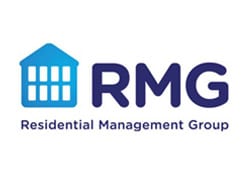FAQs
Does your company carry out all of the work, or do you use subcontractors?
Japanese Knotweed Plus Ltd undertakes all of the work ourselves. From survey to treatment, you can rest assured that it will only be our qualified surveyors conducting the work. A typical procedure looks like this;
- Where possible the client sends us photos, where we can identify if the plant in question is Japanese Knotweed or not. This is free of charge.
- Next, we visit the client and perform a survey.
- We then follow this visit up with a comprehensive survey report.
- If indeed you do have Japanese Knotweed and you would like us to provide a herbicidal treatment, we then treat the Japanese Knotweed and put in place a management plan, including ongoing monitoring and treatment. This is what mortgage lenders and solicitors need to allow money to be leant against a property.
- We can also at this point arrange for a 10-year insurance backed guarantee free of charge, this means if anything happens to our company, you can be assured the treatment and management will continue.
- At the end of the course of treatment, we issue a completion certificate.
I am planning on selling my home, I have been asked on the TA6 property questionnaire, “Is the property affected by Japanese Knotweed”. I’m not sure if I have Japanese Knotweed, what do I do?
It is the responsibility of the vendor to report Japanese Knotweed on the TA6 form if they know they have it. If it is found later and the vendor has tried to hide it there can be serious consequences.
In most cases a conveyance surveyor will identify it as part of their survey report, they tend to air on the side of caution. So, even if they are not sure they will still insist that a Japanese Knotweed specialist such as ourselves visit the site and provide a survey report.
You don’t have to wait for a surveyor to check, you can send us an image to help you identify if you have Japanese Knotweed free of charge.
If you do have Japanese Knotweed as a result of a survey from a company such as ourselves, don’t panic. Always opt for a company that has PCA-qualified surveyors and they will be able to provide you with all the paperwork necessary to ensure a smooth sale of your property.
I bought my property a couple of years ago, with no evidence of Japanese Knotweed. However, now, I can see the Japanese Knotweed within my property boundary. What should I do?
It is the legal responsibility of the seller of a property to declare if they are aware Japanese Knotweed is present when they sell their property. They are asked in section 7.8 of the TA6 form, as part of the seller’s pack when selling their property. If they have indicated “No” and it is determined that they knew there was, in fact, Japanese Knotweed present you can seek legal redress against them.
In order to pursue this with a solicitor, we would advise you have a survey report conducted. This will first prove that you do in fact have Japanese knotweed and also give you an indication to the age of the plant. If it is suspected that the plant is older than the time you have been in the property, this report can support legal actions against the seller of the property.
Can I get a mortgage if there is Japanese Knotweed on the property I am considering buying?
Yes, is the short answer to the question.
In order to satisfy the lender of the mortgage, a survey will need to be conducted by PCA qualified surveyors such as ourselves, followed by treatment, a management plan and a 10-year independent insurance backed guarantee.
If all of these things are put into place, in most cases most mortgage lenders are then happy to lend money against the property.
My neighbour has Japanese Knotweed in their garden. What should I do?
It depends on your plans. If you neighbour has Japanese Knotweed and it is well controlled and isn’t spreading onto your land in the main it is usually fine.
If you are trying to sell your property, this would cause a problem, the potential buyer wouldn’t be able to get a mortgage unless there is a management plan in place. We would always advise clients to talk to their neighbours in the first instance, to see if they would be willing to share the treatment cost. Unfortunately, in most cases, the neighbour won’t be interested unless they are also planning to sell their property in the near future.
It’s also worth mentioning, that enforcing The Anti-Social Behaviour, Crime and Policing Act 2014 and Infrastructure Act 2015 against the neighbour that has Japanese Knotweed on their land may be an option and is something that you should carefully consider and discuss with your solicitor.
Why do I have to pay for treatment to sell the property when the Japanese Knotweed isn’t even on my land?
Whilst this is a frustrating situation to find yourself in. If a conveyancing surveyor has highlighted Japanese Knotweed on a neighbours land that could impact on the sale of your property, you will need a management plan in place in order to sell the property.
Again, in the first instance, the sensible option is to discuss this with your neighbour where possible. In some cases, they will pay for the treatment, or at least contribute towards the cost. If they refuse and you are left to pay for it, you could seek legal advice to see if anything could be done. We are not lawyers and can’t advise directly on this.
Can I get into trouble for having Japanese Knotweed on my land?
As long as any Japanese Knotweed on your land is not within 7 metres of habitable space, i.e. your house, garage or conservatory and within 7 metres of any neighbouring properties you aren’t doing anything wrong.
The difficulty could come when you try to sell your house, at this point if a surveyor decided it needed investigating a company like ours would need to conduct a survey to ensure it isn’t causing any issues.
Is it true that if I let Japanese Knotweed spread onto my neighbour’s land a council/court could issue an ASBO against me?
If you knowingly let Japanese Knotweed spread onto neighbours land, you could be considered a nuisance and after being warned about this an ASBO is an option available to the authorities.
I have pulled the plant out of my garden and thrown it back into the neighbour’s garden where it came from. Could I get into trouble?
This action may be considered as spreading the plant. According to the Wildlife and Countryside Act 1981, if any person plants or otherwise cause to grow in the wild any plant which is included in Part II of Schedule 9, such as Japanese Knotweed, the person may face a fine of £5,000 and/or 6 months imprisonment, or 2 years and/or an unlimited fine on indictment.
I need to sell my property and I am willing to pay for the treatment of a neighbours land. They won’t allow me access, what can I do?
The law is a little grey in this area, potentially they are obstructing the sale of your property. However, we would recommend you seek legal advice regarding this matter.
Why is Japanese Knotweed such a concern for buildings?
In certain cases, the plant can weaken or even damage structures, such as brickwork, foundations and underground utilities, if left untreated. This is the main reason why the plant is checked for when selling or buying a property.
Is it easy to spot Japanese Knotweed?
Japanese Knotweed can be tricky to identify, we offer a free identification service, simply send us an image through our contact form and we will quickly help you identify if the plant you send is indeed Japanese Knotweed or not.
The issue is the plant changes appearance quite a lot through it’s growing season, it is especially tricky to identify during the winter months.
This is why a lot of times a conveyancing surveyor can either misidentify it or ask for a survey to be undertaken by a company such as ourselves to be sure when conducting their property survey.
How did Japanese Knotweed get into my garden?
There are several main ways in which the plant is spread:
- Animals such as foxes or badgers are capable of bringing a small piece of the rhizome (underground stem of the plant that stores nutrients) on their fur into your garden resulting in regrowth.
- Streams, waterways, railway lines.
- Fly tipping, use of contaminated soil.
Rhizome fragments as small as 0.8 gram or stem fragments with two nodes are capable of regeneration into new plants.
Is it true that the best way to get rid of Japanese Knotweed is to dig it out?
The Environment Agency recommends that wherever possible herbicide treatment is the preferred method of treatment. Digging out and sifting soil contaminated with Japanese Knotweed will always carry a risk of regrowth on-site or spread to other sites through machinery and footwear. In contrast, applying chemical treatment minimises spread of the plant off-site.
Obviously, in some instances dig out can be the only option. Herbicide treatment normally takes 2-3 years followed by 2-year monitoring to eradicate the plant, whereas digging can be undertaken within a short period of time. The time factor is indeed crucial for building companies. However, for most of the domestic and other customers who do not require site development, herbicide treatment is an ideal cost-effective alternative.
How long will it take to kill the plant by herbicide treatment?
We normally apply a two-year treatment course using herbicides to kill slowly the plant. The course will be followed by a two-year monitoring period to ensure that the probability of regrowth in the future will be significantly low. The herbicide we use can be sprayed onto the leaves or injected into the stems. It will be drawn down into the plant’s vascular system and stop the production of amino acids which build up the protein that the plant needs to grow and survive. The plant will effectively slowly starve to death. If the plant is well established and densely populates the area, a treatment course may be extended to three years.
Why can not I just put a strong weed killer on the plant and kill it myself?
Japanese Knotweed could turn to a dormant state for up to 10 years if the wrong herbicide or wrong dose of herbicide is applied. We do not recommend using strong weed killers from your local DIY store due to the risk of dormancy. The use of other substances such as diesel, petrol, vinegar, white spirits, etc. must be avoided due to the risk of contamination of soil, plus they will not kill the Knotweed.
It is always advised to refer to specialist companies that are qualified to use professional grade herbicides and have a license to handle and apply them. Note, that operation under Grandfather Rules exemption is no longer allowed since 26th November 2015. It used to be the case that if you were born before 31 December 1964 you were allowed to apply professional pesticides on your land. This is no longer the case unless you hold a recognised certificate.
Please be aware that a mortgage lender will not lend on a property where Japanese Knotweed has been treated without the production of a management plan.
Will I be able to put a thick weed membrane over the area infested with the plant to hide it?
Some people do try to hide Japanese Knotweed, there are weed membranes available that will do a good job of this. However, over time it will find a way out and start to spread.
It is a legal requirement to report Japanese Knotweed when you come to sell your property. If it has been intentionally hidden and it later re-appears you may be liable for compensation and other legal issues.
Are there any specific rules about how to recycle dead canes of Japanese Knotweed in my garden?
The only general rule is to prevent spreading the plant or soil contaminated with the plant fragments outside of your property boundary.
You can compost or burn (if permitted) on your land.
You must not put the plant/contaminated soil in the bin for general/garden waste.
You can arrange disposal of the Knotweed off-site. However, as it is classed as a controlled waste, the transportation must be undertaken by a dedicated waste carrier to a licensed landfill site and accompanied by the appropriate waste transfer documentation.
What time of the year can treatment with herbicides be carried out?
The treatment is normally applied when the plant is at least three feet high. It should have sufficient foliage area to absorb enough herbicide to be translocated to the rhizome system if applied by spraying. If the injection method is preferable, the stem thickness should be 1 cm or over. Normally, the first treatment may be applied at the end of June to the beginning of July, with the second treatment in September, or up to the beginning of October in mild weather conditions.
Can treatment with herbicides be carried out when it’s raining?
Treatment by spraying cannot be applied in wet weather conditions. The plant needs to be sprayed at least two hours after the rain has stopped and at least half an hour before more rain is expected.
Injection of the herbicide can potentially be carried out in any weather condition. However, after prolonged raining, the bottom of the stems (where the injection is applied) may be filled with water that may reduce treatment efficiency. Therefore, a couple of days after prolonged rain should be allowed for efficient treatment by injection.
Can Japanese Knotweed harm my family or pets?
The plant is not harmful to you or your pets, in some cultures the plant is actually used for medicinal purposes. Various Knotweed recipes, including Japanese Knotweed wine, are available online. If you are cooking Japanese Knotweed in your house, the plant fragments must be taken from your land only. Otherwise, it may be considered as an attempt to spread the plant, with possible legal consequences.
Surprisingly, in some areas of Scotland, the plant is actually protected as it shelters otters while they are migrating between different wet areas.
Is the herbicide you use hazardous for humans and pets?
According to the documentation of the manufacturer of the herbicide we use it is not classified as dangerous.
It is not expected to produce significant adverse effects to the environment when recommended usage instructions are followed.
It is not a persistent, bioaccumulative or toxic nor a very persistent, very bioaccumulative mixture.
Short-term eye contact, skin contact, inhalation is not expected to produce significant adverse effects when following the recommended usage instructions. However, it is advised to avoid all of these by using the appropriate safety equipment.
It is not harmful to pets. However, it is recommended to keep pets inside during the treatment until herbicide has dried. This is more to stop them bringing wet herbicide to plants that aren’t intended to be treated.
If we spray herbicide close to your house, we always ask you to shut your doors and windows and keep pets inside to avoid any unknown issues that may be caused by treatment.
Do you need help identifying Japanese Knotweed on your property? Call us 7 days a week: 0161 883 0666
Discover Our Valued Customers



















